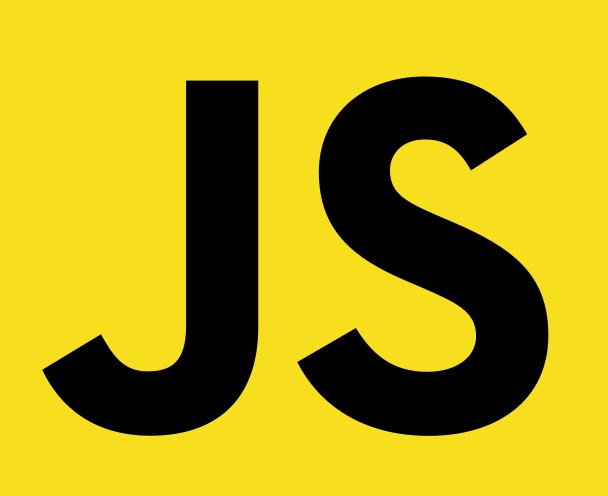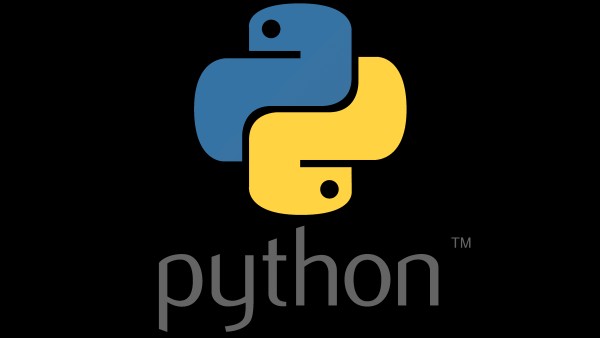The field of web development is a sweeping concept, and it’s one that’s only going to become more integral to our society for the foreseeable future.

The canvas that developers paint spans in scale from simple single page websites to proprietary enterprise-level web infrastructure and highly sensitive national security databases.
But regardless of the nature or complexity of a task, a developer can’t accomplish anything without being fluent in communicating with the technology they’re working with.
Programming languages communicate with computers by issuing commands which are structured around a logical process.
There are roughly 700 programming languages in existence, although that number takes into account a number of niche, forgotten, and redundant languages.
Fortunately, no programmer needs to learn all of those languages — and understanding the logic and syntax of one programming language can make learning new ones significantly easier.
And since web-based architecture is often collaboratively built and maintained over the course of generations of developers, the functionally active languages in web development tend to be relatively stable.
That’s not to say that new languages don’t become popular mainstays or that old ones don’t ever die, but learning the fundamentals of any of the important programming languages should leave you comfortably equipped for software development.
Of course, what languages you should know and how fluent you need to be in each depends on your role in development.
Taking into consideration both front-end and back-end development, here are the top programming languages web developers and students should pay attention to in 2022 and beyond.
Essential Front-End Languages
Since front-end development is focused on creating the content that the user sees rather than the underlying processes delivering information and sorting logical processes, front-end developers typically don’t need to be as conscious of programmatic thinking or as fluent in the syntax of specific programming languages as engineers on the back-end.
But as websites and apps have become more dynamic with their presentation, more and more logic is being handled on the front-end (i.e in the client-side browser).
If you want to excel, a comfortable understanding of programming logic is essential.
Fortunately, the path to front-end competence has been consistent for a long time and isn’t likely to change significantly in the near future.
1) The Elephant in the Room: HTML and CSS
The two languages that the typical front-end web developer uses the most aren’t actually programming languages at all. But that doesn’t mean that they aren’t important.
HTML is the formative language for front-end development, and clever designers can squeeze quite a bit of clever usage out of it.
That’s particularly true when used in conjunction with CSS. The distinction between HTML and a programming language is right in the name — HyperText Markdown Language.
Whereas a programming language can store variables for later use and follow a logical series of commands, HTML simply marks down content that’s already there.
Though its basic structure is simplistic, periodic iterations of HTML have allowed for a more sophisticated approach to structuring and decorating content.
In 2022, a big part of structuring your tags involves making content more accessible to everyone and simplifying and properly annotating content for later developers.
Much of the skill of HTML mastery involves the logic of how your content is structured rather than the logic of how you communicate logical commands.
The introduction of Cascading Style Sheets (CSS) brought significant texture and complexity to how HTML is used — and it offers a significantly higher ceiling for mastery of HTML on the front-end.
Style sheets allow you to assign highly complex and tightly specific attributes to classes and IDs that are then referenced in accompanying HTML tags.
By connecting these style sheets to HTML documents, it’s significantly easier to create a sense of consistency across your site and create design elements that can be programmatically scaled upward with the integration of new pages and elements.
Though neither CSS or HTML is a programming language, both are going to be a bigger part of a front-end developer’s average life than any programming languages — at least with one exception.
2) JavaScript: The Recognized Standard For Front-End Programming

If you’re being asked to design a new web site or work on the front-end of an existing project, chances are that an understanding in JavaScript will be a necessity.
As the only major language used on the front-end, JavaScript doesn’t do the heavy lifting of handling data — but it does allow for some of the more sophisticated design elements that are prevalent in modern web content.
JavaScript elements can involve everything from dynamic menus and interactive animation to sliding carousels and integrated audio or video players.
Front-end developers can even inject some level of logic into their content with JavaScript. The syntax is easy to understand, and it’s an agile performer.
No matter how you plan on employing JavaScript into the front-end, you’ll want to use a framework for any project of reasonable complexity.
Frameworks provide a structure for organizing the content and logic of your JavaScript and offer functionality for state management in addition to a number of other facilitative tools.
Javascript Frameworks
Facebook’s React framework has quickly become ubiquitous thanks to its use of a virtual DOM and its integration of components to keep code easily readable and content complexly defined.
But Angular has also been getting a lot of traction thanks to the rising popularity of single pages applications — a design at which Angular excels.
Vue.JS and Ember are also relatively popular, but the right framework can often change depending on the technical demands of a project.
New or returning front-end developers can start by finding the framework that feels comfortable to them.
Once you have a comfortable understanding of JavaScript, you can learn new frameworks. But developing that fundamental understanding of JavaScript is critical for anyone who wants to feel comfortable in a serious front-end role.
3) TypeScript: The Front-End Heir Apparent
TypeScript technically isn’t its own language but is instead what’s known as a superset of JavaScript.
In functional terms, that means that the language will be familiar to anyone who’s comfortable writing JavaScript, but it does have characteristics and features all its own.
Because of how it’s designed, a document written in TypeScript will actually be compiled into JavaScript before being delivered to the user.
That also means that vanilla JavaScript can run effectively and without any risk of misinterpretation in a TypeScript element.
As far as the practical needs of curious front-end developers are concerned, that means that you can learn JavaScript and then transition into the more advanced functionality of TypeScript further down the line.
JavaScript’s loose functionality has a role to play in its ubiquity, but TypeScript offers new benefits by providing more tightly structured variables that are defined by data types that limit what they can do.
Initially designed by Microsoft, TypeScript is designed to be scalable to the needs of enterprise-level companies — and strictly defined types means that you can trust your data and logic to be easy to interpret even as your code becomes complex and split across an incredibly complex directory.
TypeScript can be used in existing JavaScript frameworks — but there are also a number of frameworks specific to TypeScript. These include NestJS and FeatherJS.
Essential Back-End Languages
The code written by back-end developers is used to manipulate data from the server.
This could involve securely processing transactions for an e-commerce site, updating real-time news delivered through the use of an API, or processing user account information.
While the variety of tasks that back-end developers can accomplish is pretty expansive, the logic and language underlying them is often more similar than you might immediately think.
Programming languages are understandably more prevalent and more varied on the back-end, but a few languages still dominate the field.
4) Node.js – JavaScript on the Back-End
JavaScript’s ubiquity on the front-end definitively has a part to play in its wide back-end adoption.
It allows smaller projects to be handled comfortably by a single developer without having to learn new languages, and it can facilitate easier communication between front-end and back-end development on larger projects.
And since it’s neither strict nor too complicated in its syntax, it’s a great entry level language for aspiring developers. Also facilitating its rise is the fact that JavaScript is widely compatible with most browsers and devices. That ability to easily scale devices and the general stability of it as a platform make it a great choice for mobile app development.
But you also have to credit some of JavaScript’s success as a back-end language to the arrival of Node.js.
It’s the most popular back-end framework for JavaScript and is especially praised for its ability to quickly scale up to the needs of a growing project.
It’s not the only back-end JS framework in usage though. Express.js is built off of Node.js but is more specifically focused on the development of client-side APIs.
Spring Boot may get less attention, but it’s also a solid framework choice with a decent amount of adoption.
5) Python: A Smartly Built, Reliable Workhorse

The looseness of JavaScript’s syntax makes it a solid choice for beginners, but Python is the back-end language that can boast the most natural syntax.
Python statements tend to do a great job of replicating the rhythm of human language, and that makes the process of interpreting your objectives easier.
And code that’s easy to write also has the advantage of being easy to read. Python is one of the world’s most adopted programming languages, leaving Python developers with a large community and archive of resources to draw from as well as a tremendous selection of libraries to choose from.
Python is especially popular in the fields of data science and machine learning, both of which have wide-reaching application in the world of web development.
The two most prominent frameworks for Python in web development are Django and Flask.
Django actually offers all of the tools for full-stack development, and its exhaustive range of features cater it most readily towards the needs of larger projects.
Django probably isn’t the framework you need if you’re trying to mock up projects quickly. Flask distinguishes itself by offering an effective but easy to use API integrated into the framework.
6) PHP: The Language That Fuels WordPress
![]()
PHP is often represented by an elephant, and it’s a fitting choice for a programming language with a reputation for being a little slower but sturdy and dependable.
PHP narrows its focus a little more comparatively, and it’s really working at it’s best when it’s dealing directly with server-side databases.
And since it’s platform-independent, deployment on a larger scale normally isn’t a problem. Age is an asset for PHP as well. A reputation dating back a quarter of a century brings with it an extensive legacy codebase, a huge community of developers, and some major adopters in the tech world.
Both Facebook and WordPress run on PHP, both natural choices considering how much the interactions on their apps depend on database requests and management.
Laravel is the first name that will come to the mind of most developers if asked about PHP web frameworks, and it’s remained relevant for over a decade because of how competently it simplifies complex issues on the back-end.
It’s not the only framework to use an MVC model, but it’s easily one of the most effective. Other popular choices include CakePHP and CodeIgniter.
7) Ruby: A Boon For Rapid Web Development

Ruby’s biggest claim to fame may be its community. Notorious for being helpful to newcomers and eager evangelists to how Ruby can change the world, they’re an accurate reflection of the language itself.
Ruby has an impressive cleanness and elegance to its syntax, but there’s a pretty exhaustive range available as well.
With over 60,000 Ruby libraries available, properly scoping a project is important.
But Ruby’s greatest value may be how quickly you can take an app from concept to deployment. That elegant syntax and object-oriented design tends to translate into that philosophy for quick and streamlined production is only magnified by Ruby’s most popular framework — Rails.
Ruby on Rails offers a quick and effective way to scaffold a web project and automatically generate the structure and important code.
Developers can mock up the general design almost immediately and then have an array of tools available for perfecting it and adding more complexity to the project.
Sinatra is a framework that’s most often used when creating simple REST APIs, while Padrino builds off the fundamentals of Sinatra to deliver something more fully featured.
Final Words
So, there you go. The above are some of the most important and popular programming languages for web development. You should first identify yourself and decide if you want to be a front-end or back-end developer and choose one of the above and master it well before moving to the next one !!
Leave a Reply